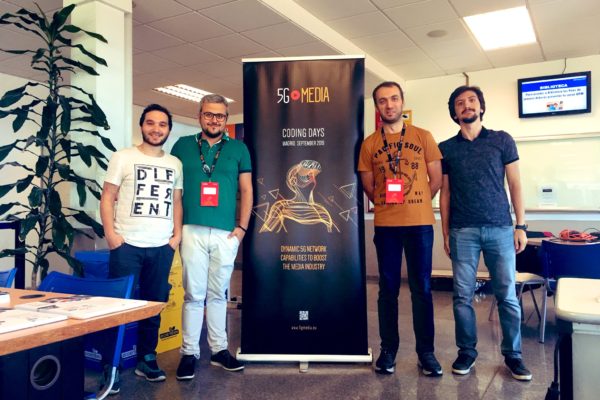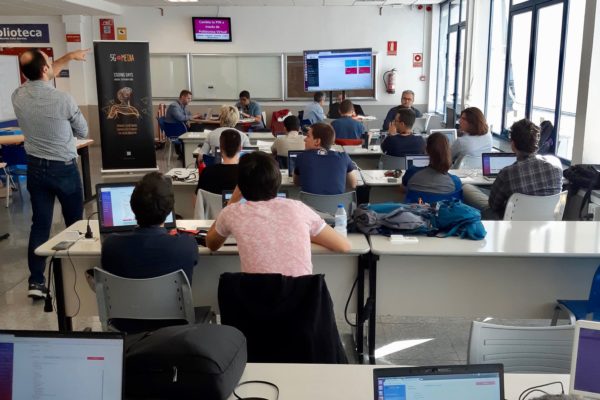5G-MEDIA CODING EVENT
On September 26th and 27th the EU H2020 5G-MEDIA project consortium organised a coding event in the Telecommunications school of UPM in Madrid. This event had a practical seminar format and, along the two days of the event, the participants learnt how to deploy a Network Service by using the 5G-MEDIA platform and the main features of it, such as the use of serverless computing paradigm, the optimisation of the network underneath and the unikernel format packaging.
Thursday 26th started with a brief introduction to the general platform of 5G-MEDIA project leaded by NETAS, taking the participants to meet its main components as well the main paradigms in which the work developed on the project life is based on Network Function Virtualisation (NFV), Serverless computing, Functions as a Service (FaaS) and Software Defined Networking (SDN). NETAS presented, after the introduction, the three Use Cases of the project:
- Use Case 1: Immersive Applications + Virtual Reality
- Use Case 2: Smart and Remote Media Production
- Use Case 3: Ultra HD over Content Delivery Network


The first practical exercise started with the presentation to participants of the 5G-MEDIA SDK. Once they got familiar with this key component of the platform, participants learnt how to edit, validate, onboard into the 5G-MEDIA Apps and Service Catalogue and, finally, instantiate a Network Service. In this case the Functions and Service validated and instantiated were related to the second use case of the project. After instantiating the service, participants learnt how to monitor the different parameters that could be obtainable from the network service by using the Grafana dashboard integrated into the 5G-MEDIA SDK.
The first day finished when IBM took the floor introducing the participants into the Serverless Computing paradigm, showing them how to enable a fast instantiation of services into a cloud environment by using tools like Kubernetes and Apache OpenWhisk. After the theoretical introduction, the practical hands-on exercises started showing the FaaS functions declaration and behaviour with different virtual functions such as a transcoder, a speech-to-text, and an image recognition function.
The morning of Friday 27th was dedicated, leade by UCL, for tone of the key components of the 5G-MEDIA project, the MAPE loop (Monitor Analysis Policy Execute). The aim of this component is to optimise the Quality of Experience (QoE) of the end-users by managing the behaviour of the Network Services and the network underneath. UCL presented the Cognitive Network Optimiser (CNO), which is the main component of the MAPE loop. Participant learnt how this component collects monitoring data and metrics from the Network Service, analyse them and propose a specific set of actions to execute in order to improve the performance of the service. Another important fact that was shown is the placement and interaction of the CNO with the rest of the platform.
After this presentation, participants learnt about the algorithms that the CNO has behind, providing some introduction about concepts of Machine Learning like supervised, unsupervised and reinforcement learning. Inside this last topic, participants could follow some guided exercises where the performance metrics of the algorithm and the QoE were changing depending on some specific parameters. After this training, participants tried to follow the same rational with some hands-on exercises.
The afternoon started with a presentation about the Unikernel packaging format, led by ENG. In this presentation, participants followed the different steps that are needed in order to create a VNF with images in unikernel format before a little hands-on exercise where they could to by themselves.
Finally, NETAS took again the floor in order to present a final exercise, in which participants could design, emulate, validate and onboard into the catalogue a new Network Service. This time, the chosen network service was the Use Case 3, and the participant could do it in a freeway counting on some help and tips coming from members of the consortium.
Before the final networking between participants and consortium members, UPM made the wrap-up placing all participants to a future follow-up of the activities, where the consortium will be available in order to solve remaining doubts and issues related to the exercises that may rise form their reproduction.



